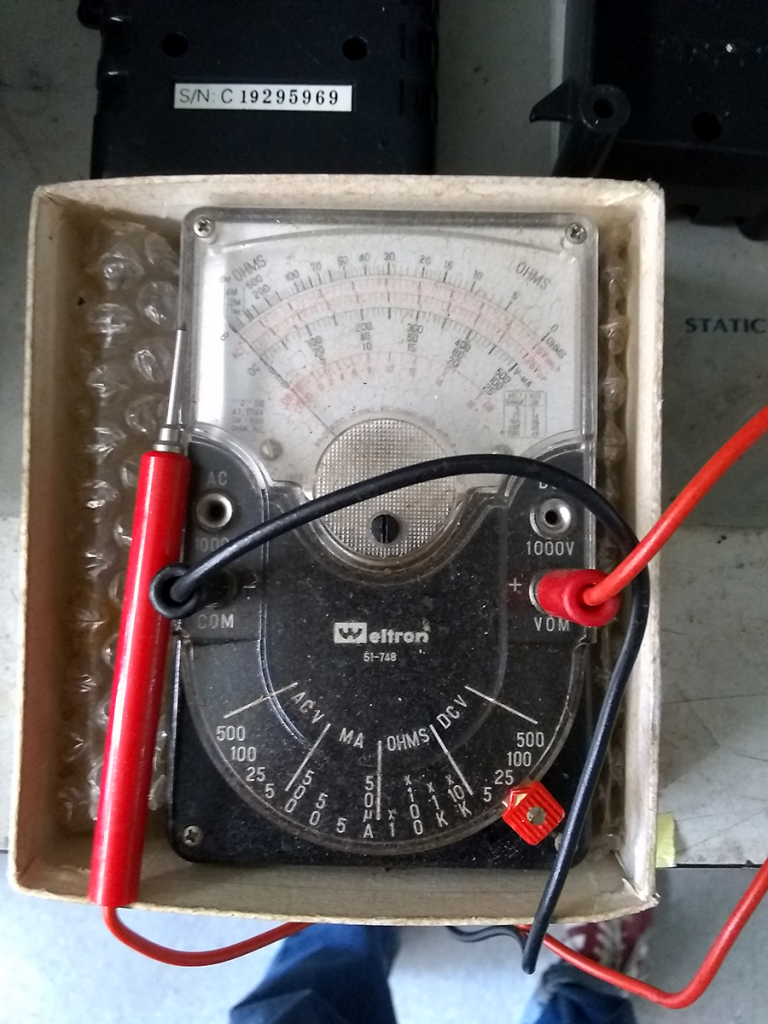
Stumbled across this little old gem while cleaning the Observatory. Age unknown, could use a little cleaning, but it still mostly works. We’re charmed by all manner of objects around here.
Neat-o!
Discoveries in the Physics & Astronomy shop | Science, curiosities, and surprises

Stumbled across this little old gem while cleaning the Observatory. Age unknown, could use a little cleaning, but it still mostly works. We’re charmed by all manner of objects around here.
Neat-o!
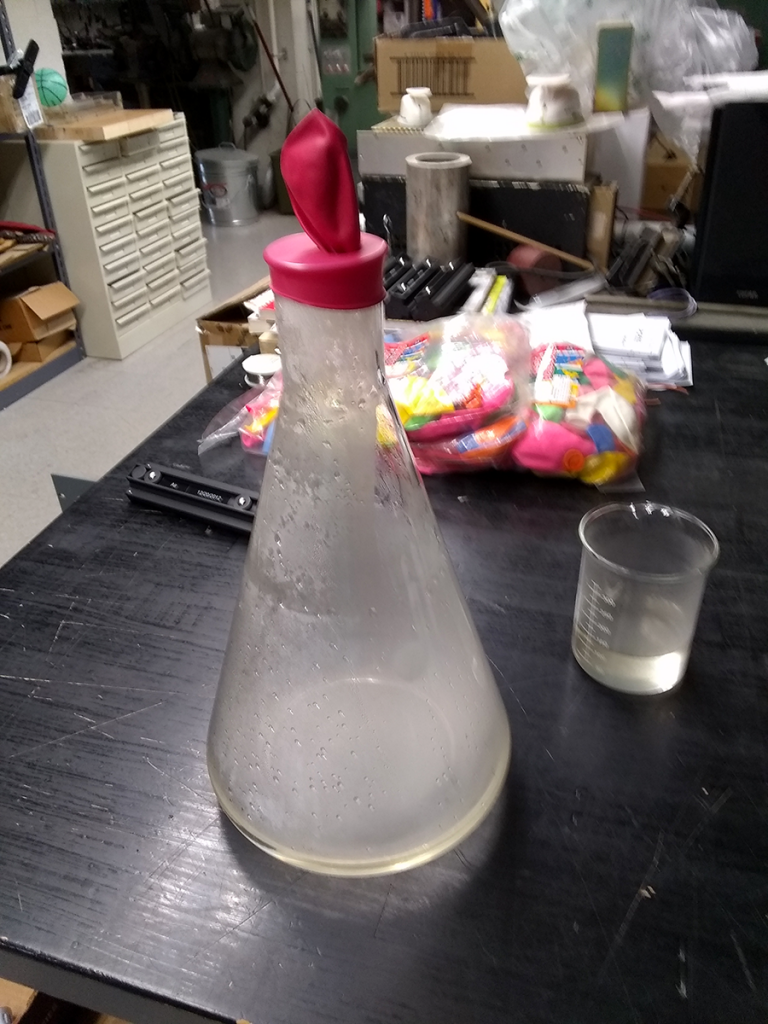
What can you do with a large Erlenmeyer flask, a kettle of boiling water, and a bag of balloons? Science, of course!
Get the flask hot with a pour of boiling water first, then pour out. Add a small amount of boiling water – as hot as can be – and quickly seal with a balloon. We’re looking for steam, and lots of it.
Then wait and see what happens!
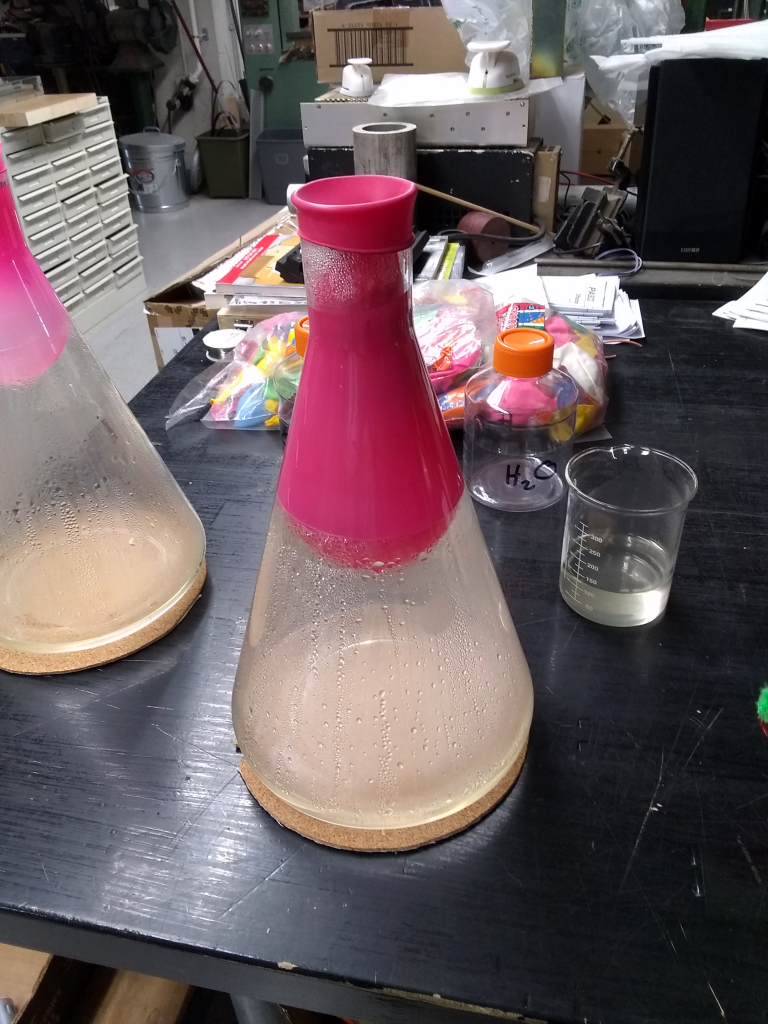
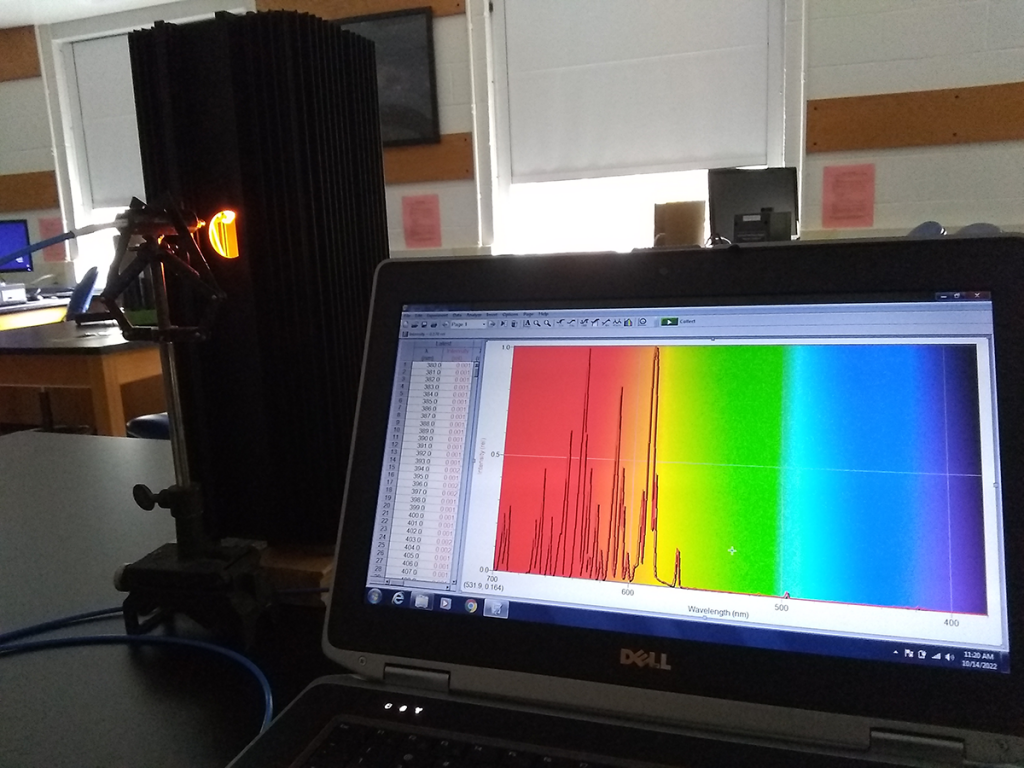
Astronomy is roughly 98% figuring out how to look at stuff better than our eyes can do it.
Gathering more light with large-aperture lenses and reflectors. Gathering more light with long camera exposures. Using detectors for light outside the visible spectrum, from radio waves to gamma rays. Launching telescopes a million miles into space to get away from our pesky atmosphere. Splitting the broadly blended colors we perceive into their component wavelengths.
That last one’s the easiest to accomplish in a student lab setting, and it’s a broadly useful scientific tool across many disciplines. Turns out that certain particular constraints caused by quantum physics make all sorts of other observations possible. Who knew?
Pictured above is a low-pressure sodium lamp, just like the ones that once illuminated nighttime streets around the world with their flattening orange glow. Looks orange to our eyes, but it’s primarily a mix of red, orange, and yellow wavelengths. If you measure those carefully enough, you can discern a certain “fingerprint” on a spectrum of light that would tell you if sodium is or isn’t present in what you’re observing.
Same applies to hydrogen and helium. Nitrogen and oxygen. Argon and neon. Carbon dioxide. Water. Every atom and molecule – including different ionized states, which is a particularly useful bit of information for astronomers – has its own unique spectrum of light it emits. You just need to look at it in the right way.
Even if it’s millions of light-years distant.
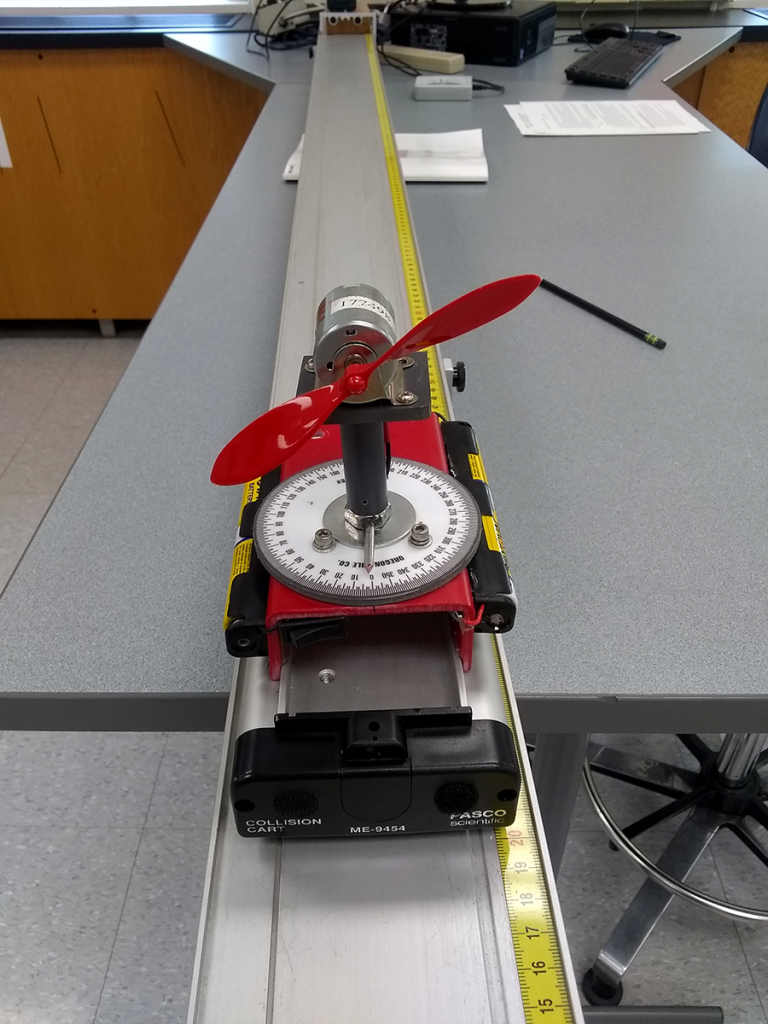
Newton proposed three laws of motion, and it’s the second one that makes for the most interesting labs. Maybe there’s some way to make inertia both fun and educational, but let’s leave the first law for lecture. Equal and opposite reactions are pretty great, but that’s ideal for big demos. Read: rocket launches.
Force, though. Force lets students do stuff and observe what happens. Doing stuff and getting results is how you make physics more interesting.
One tool in our Newton’s-second-law arsenal is the fan cart. An assemblage of a cart with low-friction wheels and a simple DC motor holding a plastic fan. The fan mount pivots, providing variable direction of force. Runs on AA batteries, and is held together mostly with hot glue.
Two very good reasons for the hot glue: 1) When one of these invariably plummets to the floor, the less-than-rigid connections absorb a good deal of the impact when it all falls apart. Usually it falls into pieces, but nothing’s really broken. 2) After one has taken a tumble, it’s mere minutes to get it re-glued and running once more.
The reason for the fan is that it provides a close approximation of constant force, F. If F is constant, and mass (m) is constant, then by F = ma, acceleration (a) is constant, too. Give a running cart a little backwards push – an additional force – and study how its position and velocity change over time. Simple? Sure, and that’s helpful when tying together various concepts.
Relationships between force, mass, and acceleration according to Newton’s second law. Two-dimensional vectors come into play when rotating the fan. Our motion detectors read position, so it’s an illustration of integrals and derivatives underpinning the acceleration, velocity, and position of a moving cart.
The importance of catching a speeding object before it bangs into the end of the track and crashes to the floor.

A great many jobs in the daily work of a shop consist of riffs on this: can you make item A connect to item B? It might be physical connections, electronic and/or digital signals, or even the relatively abstract interpretation of transitioning a lab space over from one experiment to the next without disruption. The simplest ones are when someone can’t locate the proper connector cable. (There are so many different kinds!) Less simple are those times when two things are supposed to fit, but don’t.
Just straight-up don’t.
At the Tressler lab, we have the luxury of permanently-installed piers which support our telescope mounts. For our purposes, this is an excellent improvement over the default, a very stable yet heavy tripod. Now in the process of upgrading our mounts, we find that the tapped mounting holes on the pier don’t match the drilled and counterbored corresponding holes on the custom-made mount adapters. By 1/8″ or more in some cases. Sounds small. Is actually huge. Is will-not-fit-even-with-brute-force huge.
Note: not made in-house. We could try to guess where the error might have arisen, but our job is to fix it.
Also note: the previous mounting plate was not precisely machined to the proper dimensions, either, but was close enough that it was fastened by brute force. Sensing a theme here, which is this: precise measurements are crazy hard.
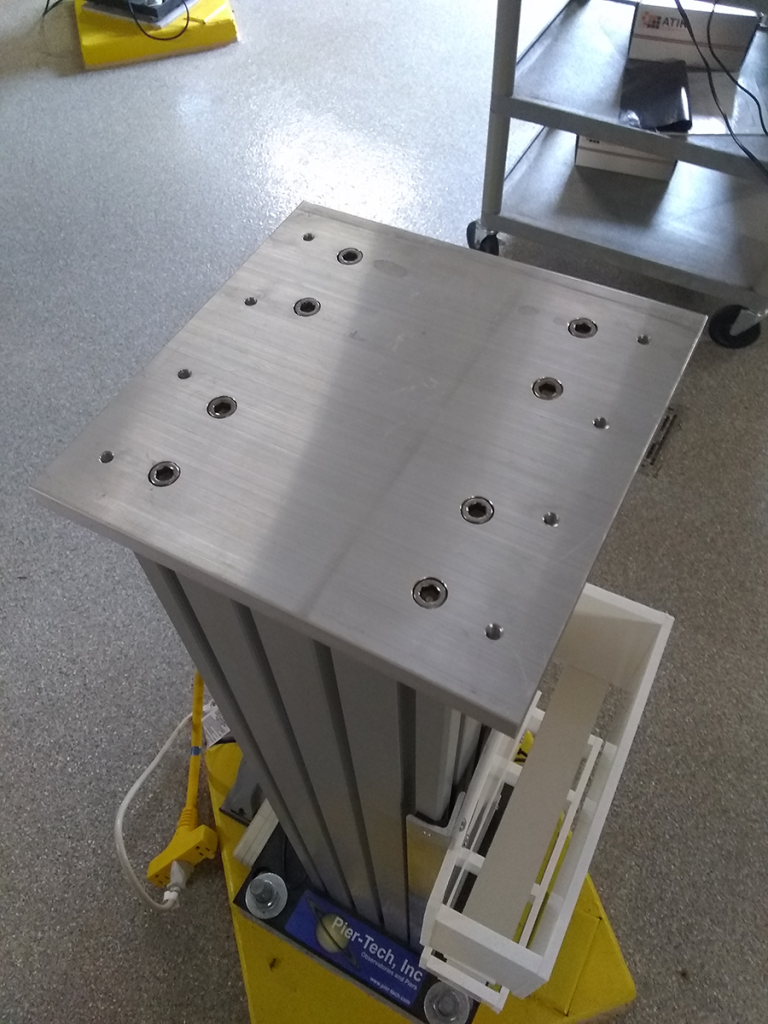
Getting to the adapter-for-the-adapter called for more than one CNC-milled plastic prototype. Measure, mill, test. Rinse, repeat. Polyethylene, as one might imagine, is cheap stuff.
A few test runs later, we have a custom-machined (in-house!) sheet of 1/2″ aluminum to connect to the 5/16″-18 tapped holes on the pier, which then sets up a new series of 1/4″-20 holes in this plate and the mount adapter to hold everything rock solid. Holes drilled and tapped, counterbored for a clean surface with all of those socket screws.
And all carefully measured and aligned on the milling machine to within 0.001″.
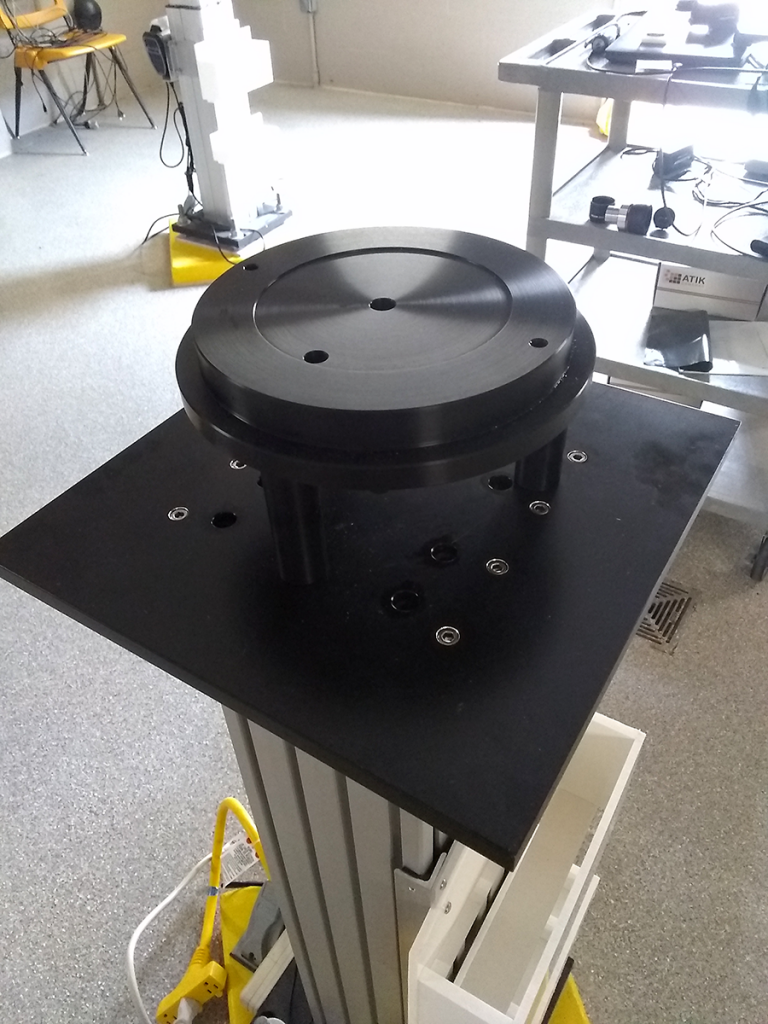
You don’t appreciate the precision of reliable machinery and sharp tooling until the pieces slip together effortlessly. Whoa! Goosebumps!
Best part? The adapter is functionally invisible for anyone who doesn’t know to look for it. Few things feel as rewarding as solving a problem before (almost) anyone else realizes it’s there.
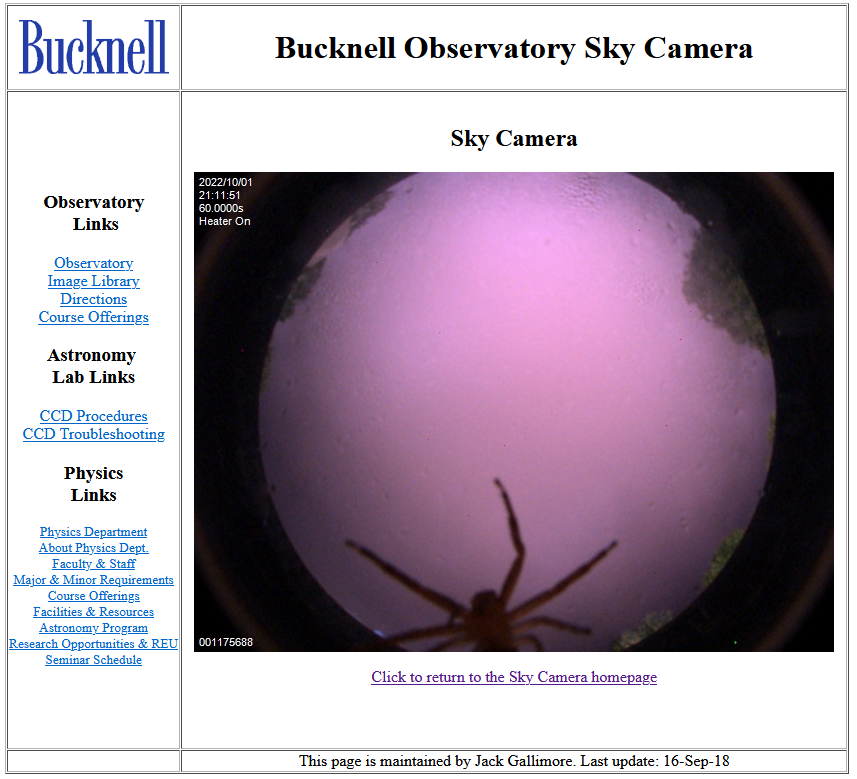
Sometimes you just happen to check the skycam at the most perfect moment. Welcome to October!